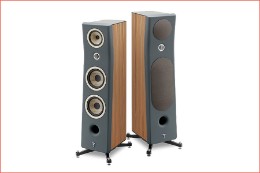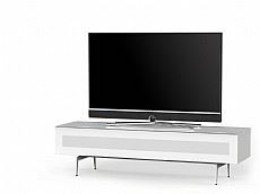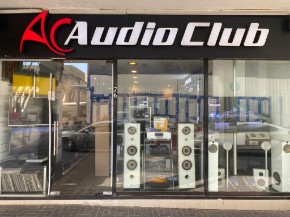Vinyl Rules!
Many of the world’s most ardent music lovers believe that the 33 1/3 RPM Long Playing vinyl record remains the most musically communicative playback medium. NAD has a long history of producing some of the best value-for-money turntables and phono stages. The PP 2e is a legendary budget phono preamp, while the PP 4 takes the superb performance of the PP 2e and adds a simple way to convert your LPs into CDs using your computer and the Internet to automate the ‘CD mastering’ process.
While vinyl LPs can be a reference quality source of musical enjoyment, they can also sound terrible if the turntable is less than reference quality. Unlike digital sources with their foolproof error correction circuits, the turntable is like a live performance with no room for error. The same piece of vinyl can sound lush, vibrant and spacious on one turntable, but edgy, lifeless and riddled with ticks and pops on another. The difference is the mechanical precision of every aspect of the turntable.
Why Does It Sound So Good?
When it comes to the C 556, NAD has spent lavishly on the parts of the turntable that define its performance, and has left off the features that do nothing to improve the sound. The result is a turntable that easily outperforms others at twice the modest asking price of the C 556. The secret to a good sounding turntable is to make a rock solid mechanical connection between the platter and the pickup stylus. Any play or vibration will either add resonant colouration (making the smack of a snare drum sound like a thud) or subtract the fine detail that is the primary benefit of well-played vinyl. To achieve this goal we use special materials and techniques. The three mechanisms that make up a turntable are the platter that supports and spins the record; the tone arm, which allows the stylus to accurately track the record; and the cartridge, which transforms the vibrations in the record groove into the electrical signals that are sent to your preamplifier.
The platter of the C 556 uses a special phenolic resin that is pressure moulded to create the ideal properties of being both massive and inert. The mass creates a flywheel effect that eliminates small, and very unmusical, speed variations called wow and flutter. The mass also rejects unwanted external vibrations, and combined with the extreme hardness of the phenolic material, suppresses vibrations in the audible range. This massive platter requires a precision low friction bearing to allow smooth and stable revolving motion. A special bronze body with a stainless steel ball bearing provides a point-perfect contact with the hardened steel shaft of the platter assembly. This is the ideal design for minimal friction, and a complete elimination of any play or ‘wobble.’ The bearing is firmly connected to the rigid and well-damped base that provides a rigid connection to the tone arm. A precision synchronous clock motor keeps the platter spinning at exactly 33 1/3 RPM and its own vibrations are carefully isolated from the platter by a synthetic rubber belt and from the base by rubber isolation mountings.
The tone arm must have the lowest possible mass while still maintaining a rigid, vibration-free connection to the record. To achieve this contradictory goal, the C 556 uses a hand built arm featuring an alloy tube and precision bearings at the gimbal pivot. A simple counter weight balance is combined with a magnetic anti-skate bias control to make for a friction-free pivot that allows the cartridge to operate in an ideal environment.
Easy to Enjoy
By delivering the turntable with the cartridge already correctly installed and aligned, we were thinking of the many new vinyl devotees who may be less familiar with the setup requirements of a transcription turntable. Setup and operation could not be simpler—the C 556 comes complete. Just set the tone arm counter weight to the indicated position, then plug ‘n play.
Whether you are new to vinyl, simply want to upgrade the sound of your vinyl collection, or even want to transcribe your LPs to digital files for playback on your computer, the NAD C 556 is the perfect choice. It is fully capable of providing the ‘vinyl magic’ that has made the LP the most successful recorded medium of all time. With the C 556, NAD is offering the best performing turntable in its 45-year history.






















